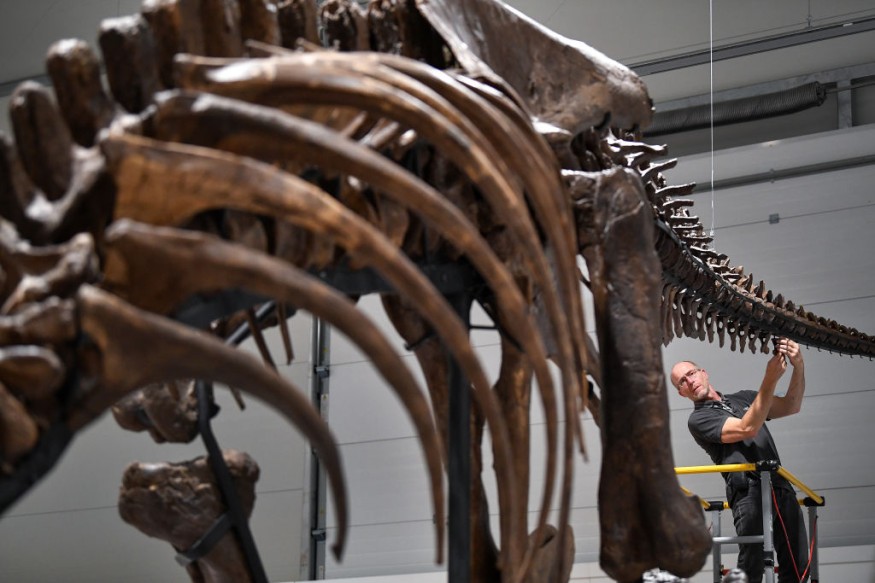
Recounting the age of dinosaurs, you can picture how far animals can grow back in the day, not just medium big, but gigantic big. It's almost unimaginable that these ancient giants used to populate the same planet that we now live on, from the legendary dinosaurs (land and air) to massive reptiles like crocodiles and snakes.
Today, these behemoths are no longer existent, and big animals this size have gotten fewer. According to LiveScience, here's why:
Plenty of fossil evidence shows that prehistoric creatures were mostly humongous and larger on average than the ones today. Greg Erickson, a vertebrate paleobiologist at Florida State University in Tallahassee who specializes in ancient reptiles explains that it is "multifactorial".
5 Differences Between Dinosaurs and Today's Largest Animals
To explain why bigger animals were pretty common millions of years ago, but aren't anymore, scientists looked into several major differences between the ancient giants to today's largest animals - mammals. Here's a list of what they found:
1. Dinosaurs could adapt to different niches as they grew bigger.
Unlike mammals, dinosaurs and other giant reptiles could do this by swapping out sets of teeth constantly over a lifetime, just like sharks. "Crocodiles, for instance, go from needle-like teeth to more robust teeth. Mammals don't have that luxury," Greg said. This allows them to hunt for bigger prey and fuel their large bodies.
2. Mammals lack air sacs.
Edinburgh University paleontologist Steve Brusatte told Scientific American that dinosaurs' air sacs likely extended from their lungs to their bones, "creating sturdy but light scaffolding." This way, their skeletons were "still strong and still flexible, but lightweight. That helped them get bigger and bigger and bigger," he explains, comparing them to skyscrapers getting bigger and bigger because of the internal support structures.
On the contrary, mammals lack such air sacs to invade and lighten up the bone, which is why mammals today can only go as big as the elephant size or a little bit bigger. "That might be the limit as to where mammals get, at least on land," Steve added.
3. Mammals need a lot of fuel.
Elephants, for instance, among others, are warm-blooded, or endothermic creatures. , dinosaurs "probably mostly were not," said Geerat Vermeij, a professor of geobiology and paleobiology at the University of California, Davis, or "on the low end of the warm-blooded range," as per Greg. This makes, let's say, a gigantic elephant's food requirement "perhaps 5 times greater than that of even the very largest dinosaurs."
4. Requires suitable environment.
A 2016 study published in the journal PLOS One suggests that gigantism is "an ecologically important trait" and depends mostly on sufficient resources produced by "highly developed ecological infrastructure." Furthermore, ancient atmospheres had higher concentrations of oxygen to support and grow a truly giant creature. According to Vermeij, this kind of ecology had seen great development by the middle Triassic period, near the beginning of the age of dinosaurs.
5. Amount of evolutionary time.
Finally, the authors explain that time is a crucial ingredient in gigantism and "it takes a vast amount of evolutionary time to reach giant sizes." When mass extinction events wiped out these giants, it leaves giant-animal slots unfilled for tens or hundreds of millions of years, Vermeij said.
"It took about 25 million years for the first mammals to reach a ton in weight," he said.
Also read : How Invasive Species Thrive in the Mediterranean
New Form of Dominance in Mammals
With the foregoing, it can be derived that gigantism mostly evolved not from physiology or environment, but from social structure. Today's mammals have introduced a new form of dominance, said Vermeij, through herds or groups.
"Group hunting by relatively small predators makes even very large prey vulnerable. Individual gigantism has in effect been replaced on land by gigantism at the group level," he wrote in the 2016 study. In other words, smaller individuals working together, like in wolves and hyenas for example, "may constitute a more effective way of getting big than building a huge body."
Consequently, this explains why gigantism may have lost its luster on land, as per Vermeij.
Related article : Fossilized Bones Fuel Debate on the Purpose of Giraffe's Necks
© 2025 NatureWorldNews.com All rights reserved. Do not reproduce without permission.





